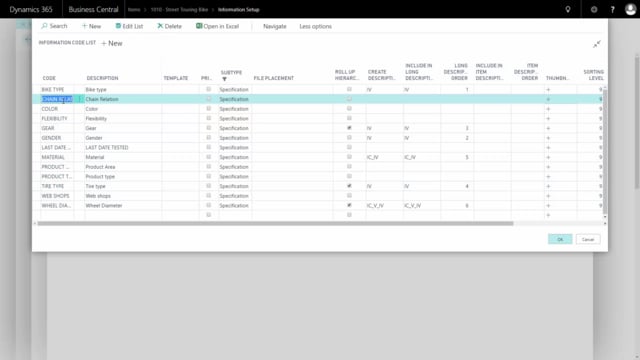
Playlists Manage
Log in to create a playlist or see your existing playlists.
Log inBy centralizing the master data information in three levels, it’s possible to modify and maintain data very easily – and have one point of alignment of data. This video will show you an example.
Transcription of video
So, from my customer Bike Master, if I go into my specification, I have, for instance here, a chain relation called The Bike Master. In my chain relation, if I enter this one, I can see that I have different information values, option for this code could be Bike Master, Future Bikes, K-MART etc.
And it’s also possible I could scroll right to add more than one information value for each entity. On this customer, however, I have only one entity, The Bike Master. If I enter my item number, like this, I’ll go to, for instance, my Street Touring Bike, and again into my master data information on my specification, I can see that this specific bike has a chain relation of Future Bikes and K-Mart.
This means I could use this information or this setup to say that this item is sold for customers with those chain relations, and I have more than one here because I set the check mark, it should be possible to add more than one.
And this is a data structure that is very aligned, so if I want to change, for instance, my chain relation name, I could just edit my list here and say that it should be called something else.
I’ll just say change X relation, and if I rename this record, it will of course apply to all the system, so now I have, by one click, entered my chain relation with the same data structure here on both items, vendors and everywhere. So, by centralizing data it’s much easier to work generically with master data.

